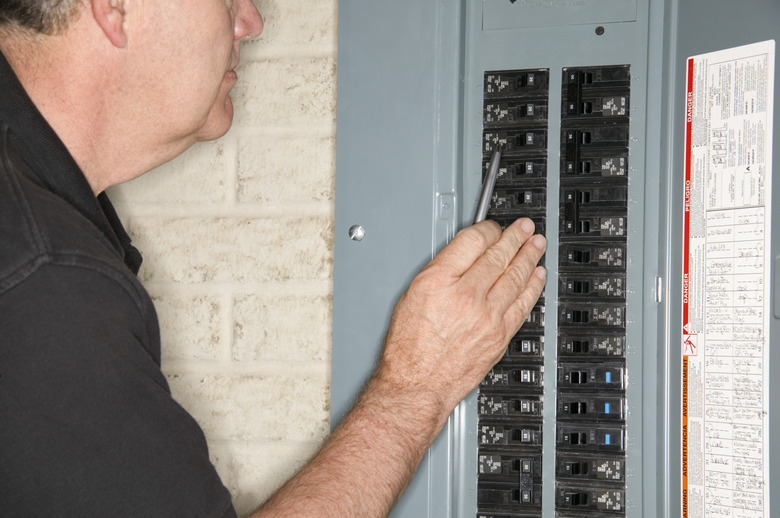How To Figure Out Which Circuit Breaker Is Which If Not Labeled
Things Needed
-
Hand-drawn plans of the rooms and locations of each light and receptacle
-
Set of handheld radios
-
Tape (optional)
-
Permanent marker
When you need to shut off the power to an electrical receptacle, you have to know which circuit breaker you should switch to the "off" position in the breaker box. In a perfect world, all circuit breakers would be accurately and legibly labeled for users. Yet, many times there are no clues as to which circuit breaker controls which outlet. If you invest a bit a time and enlist a helper, you can label all of the breakers in one fell swoop so you won't ever have to query over which switch you should flip again.
Step 1
Draw floor plans of your home or business and mark the location of all lights and electrical receptacles. Remember to label the garage and any outdoor areas. Ask someone to help you identify each circuit breaker. Give them one handheld radio while you keep the other one so that you can communicate with one another during the task.
Step 2
Turn on the lights in every room of your home so that your helper can more easily identify which breaker you have turned off. Remember to turn on switches that are connected to electrical outlets. Give your helper a small appliance such as a digital clock to plug into receptacles to test for power, as well as the floor plans and a pencil.
Step 3
Open the door of the circuit breaker box and begin with the first breaker at the top of the row. Communicate to your helper, via radio, that you are going to flip the first breaker. Ask your helper to tell you the location of the light or lights that went out. Your helper will also need to test each outlet in the room by plugging in the small appliance. Have your helper write a "1" on each light and receptacle in the plans that is connected to breaker No. 1.
Step 4
Tear off a small piece of masking tape and place it next to the breaker and write, in permanent marker, the location that is connected to the first breaker. You can also write directly on the breaker box if you don't want to use tape.
Step 5
Switch the breaker back to the "on" position. Your partner can turn out any lights in the room if he has them marked on the plans.
Step 6
Continue flipping breakers and labeling them as your helper identifies where the power has been suspended. If your helper can't readily identify a location that the breaker is connected to, mark the area next to the breaker with a piece of tape or a small dot from the marker and come back to it after you have finished identifying the rest of the circuit breakers. You can then look at the plans and use the power of elimination to figure out what location goes with the breaker in question.
Tip
If you are working on your own, flipping breakers and going to each location, leave a note on the box to alert anyone who might come home that you are working on identifying breakers. This is so they won't flip the breaker back on and interrupt your work.
Laminate the marked plans and tape them to the breaker box for future identification. Even though you marked the general location that each breaker is connected to, the plans give more detailed information concerning specific lights and outlets.
Warning
Don't reach in behind the breaker panel when working in the breaker box. Only flip the switches. There is live electricity back there and you could sustain injury.
This process could take several hours depending on how many lights and receptacles your home or business happens to have. You can save a lot of time by working with someone else.
